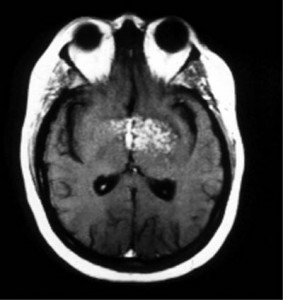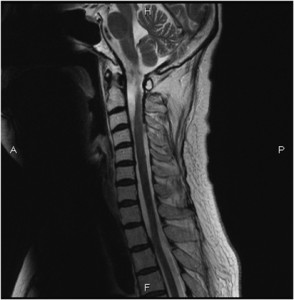Have you been lately suffering from seizures and problems in eyesight, along with occasional double vision? Watch out, for these are signs of Neurosarcoidosis and you could be actually having this disorder. Read on to know more about the symptoms, causes, diagnosis and treatment of this condition.
Neurosarcoidosis Definition
Page Contents
It is a complicated form of Sarcoidosis affecting some sections of the nervous system. Sarcoidosis is a chronic condition in which the various parts of the nervous system such as brain and spinal cord suffer from inflammation. Neurosarcoidosis can impact any part of the nervous system.
Neurosarcoidosis Incidence
The prevalence of this disorder is not properly known. According to medical researchers, however, this medical condition is most likely to affect 5-15 percent of those adults who suffer from Sarcoidosis.
Neurosarcoidosis Causes
According to medical professionals, such a condition arises when the immune system reacts excessively to any foreign material. The immune system responds in this way only when multiple genes are involved.
Neurosarcoidosis Symptoms
The condition is typically defined as irregular deposit of cell in any part of the nervous system such as brain, peripheral nerves and the spinal cord. The accumulation of cells is accompanied by a deep burning sensation. The hypothalamus (a particular portion of the brain), facial nerves, pituitary gland and the cranial nerves are the primary areas which get affected by this syndrome. This disorder can originate in a sleek fashion or appear as a sluggish chronic disorder.
Picture 1 – Neurosarcoidosis
This disorder gives rise to some common symptoms that serve as warning signs to indicate its occurrence. The symptoms tend to differ from person to person. If a patient suffers from any of the following symptoms, he/she should consult a physician and go for a diagnosis of this disorder. The symptoms of this disorder tend to change according to the organ that is involved. Know about some of the common signs evident in case of the involvement of:
Pituitary gland
- Extreme thirst
- Changes during menstrual periods
- Excessive urine outflow
- Excessive fatigue
Brain or cranial nerves
- Dementia
- Constant headache
- Delirium
- Numerous psychiatric disturbances
- Vision problems
- Reduced hearing
- Seizures
- Lack of sense of smell
- Speech problems
- Dizziness
- Vertigo
- Lack of sense of taste
- Confusion
- Facial palsy like drooping and weakness
- Perplexity
- Lack of sensation or feeling in any part of the body
- Irregular sensation in different body parts
- Weakness in body parts
- Inability to move any body part
Peripheral nerves
- Lack of sensation or feeling in any part of the body
- Irregular sensation in different body parts
- Weakness in body parts
- Inability to move any body part
Neurosarcoidosis Diagnosis
During diagnosis, physicians generally prefer a proper examination of the nervous system to reveal the signs of this disorder. A complete examination may reveal the problems associated with the nerves. A past medical background of Sarcoidosis patients, accompanied by development of nerve-related warning signs, ensures the presence of Neurosarcoidosis. Some tests used for the diagnosis of this medical ailment involve:
MRI Scans
This medical examination of the brain stands out as one of the best and effective techniques to detect critical nervous disorders.
Blood Test
Blood tests are not very useful, since they do not reveal the entire problem.
X-Ray
A proper X- ray examination of the chest may accurately display the signs and presence of sarcoidosis in the lungs.
Nerve Biopsy
Proper biopsy of the affected tissues and nerves helps verify the existence of this disorder.
Neurosarcoidosis Differential Diagnosis
During differential diagnosis, this disorder has to be distinguished from other problems like:
- Porphyria
- Neuropathies connected with monoclonal paraproteinemias and bands
- Lymphomatous and Carcinomatous meningitis with polyradiculopathy as secondary.
- Deficiency of Vitamin B-12
- Paraproteinemic neuropathay
- Brain tumors
- Alcohol and drugs
- Myopathy
The symptoms of this disease are found to be similar to that of various other disorders such as Hypopituitarism, Meningitis, Diabetes insipidus, Optic neuritis and some types of tumors. During differential diagnosis, physicians should also try to distinguish Neurosarcoidosis from such disorders.
Neurosarcoidosis Treatment
On the basis of the etiology, doctors and medical professionals advise a suitable cure for this disorder. However, there is no permanent cure for the condition. The treatment is executed if the warning signs are progressive. The sole objective of the treatment is to reduce the symptoms of this disease. Prednisone, which are corticosteroids, are highly recommended to minimize the inflammation feeling. These are highly recommended and prescribed for as long as the symptoms exist. This medicine should be consumed continuously for 2 years.
Picture 2 – Neurosarcoidosis Image
Other forms of medications include alternation of the hormones and medicines that curbs the immune system. If a patient suffering from this disorder experiences numbness, vision problems, weakness and hearing difficulties, he or she requires braces, physical therapy and a cane on an early basis. The psychiatric problems may need medicines for depression, care and safety interventions.
Neurosarcoidosis Prognosis
In some cases, the disorder is found to resolve on its own within 4-6 months. In other cases, however, it continues to exist forever. This nervous condition can cause permanent disability and may often lead to death in some cases. Hence, long term treatment is required for cases that persist for over a year.
Neurosarcoidosis Complications
The complications of this condition differ from one patient to another, depending on which part of the nervous system is involved and how one reacts to the cure. Permanent loss or gradual decline of the neurological function is one of the biggest problems. In a few cases, there may be involvement of the brainstem. This can have life-threatening consequences for a sufferer.
Neurosarcoidosis Epidemiology
Sarcoidosis occurs in 40 per 100000 adults. Out of these, less than 10 percent will b affected by Neurosarcoidosis. A rigorous treatment of Sarcoidosis can deactivate the faulty immune reactions of the body, before the nerves suffer damage. This in turn, helps minimize the occurrence of neurological symptoms.
Neurosarcoidosis is a serious health issue. Hence, the condition should be dealt with utmost urgency and care when its symptoms are visible. Patients are advised not to take this disease lightly and consult a physician whenever the warning signs of this disorder are apparent.
References:
http://www.ncbi.nlm.nih.gov/pubmedhealth/PMH0001736/
http://en.wikipedia.org/wiki/Neurosarcoidosis
http://www.ninds.nih.gov/disorders/neurosarcoidosis/neurosarcoidosis.htm
http://emedicine.medscape.com/article/1147324-differential


